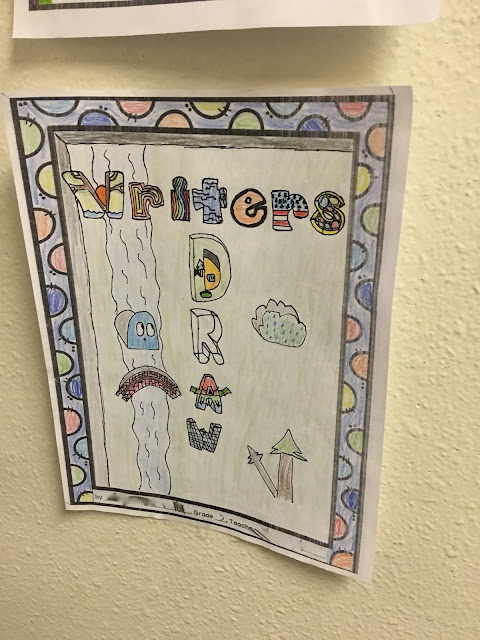One of my all-time favorite pumpkin books is Pumpkin Jack, by Jack Hubbell.
It's such a great book to use as a core literature link for a thematic science unit!
When I was teaching 1st grade, one of our favorite (months long) activities was to watch and record the decomposition of our own "Pumpkin Jack." We carved Ol' Jack and left him in a tub or bowl or rot in the classroom for a while. (Hint: don't stick a carved pumpkin in a plastic bin with the lid on...seriously...gross).
The kids recorded their observations about him, along with measurements of height and weight, in a journal that we kept. We started before we even carved Pumpkin Jack, and used the scientific method to predict what would happen. We also made a plan for when we would record our data, generally once a week or so in the beginning, and then once a month.
Loved that activity!
Next, we used How Many Seeds in a Pumpkin? by Margaret McNamara. As you can imagine, this book is perfect for math.
When we visited the pumpkin patch for a field trip, I would grab three extra pumpkins. After weighing and measuring all 3, I'd have the kids predict which one would have the most seeds. Of course, they'd always guess the biggest one, but as they'd discover, that wasn't generally the case! Then I'd cut and gut the pumpkins and we would would undertake the process of counting seeds.
Not an easy task with firsties, but it was the perfect opportunity for them to practice counting by 10s!
A couple of my other "go-to" pumpkin books are From Seed to Pumpkin and Pumpkin Pumpkin. These two are perfect for teaching about the life cycle of pumpkins. I always made a huge pumpkin (bulletin board size) and then put life cycle labels on it to illustrate the life cycle of a pumpkin. We also used these two books as mentor texts of our "All About Pumpkins" informative writing.
There are so many great pumpkin books for creating a thematic unit -- those are just a few of my favorites! If you need some more ideas and resources to get you started, my Pumpkin Unit (with all of these activity resources and more) is available on my TpT store.































